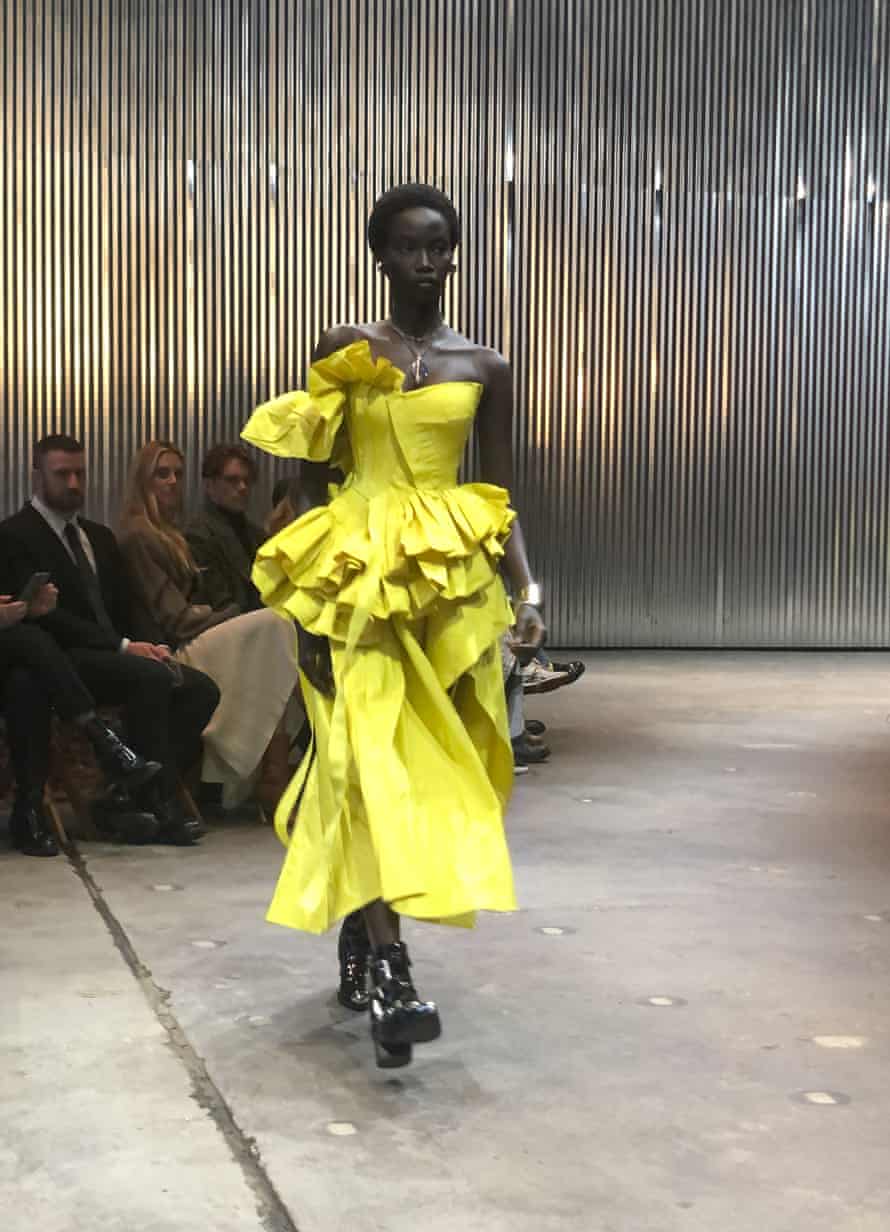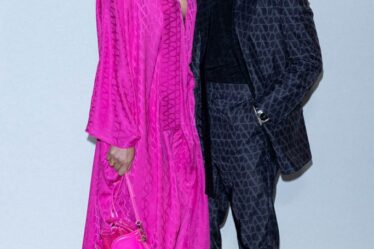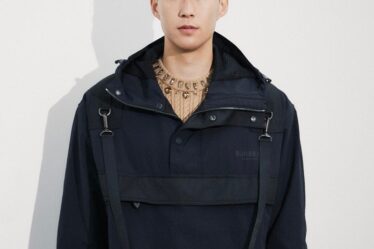
A strange, sad fashion month had its coda on Tuesday night, with the presentation of Alexander McQueen’s autumn/winter collection in a warehouse in Brooklyn, New York City.
Models walked around large piles of artfully arranged mulch which, the brand’s creative director Sarah Burton said backstage, were made from trees that had “fallen down naturally” and would afterwards be donated to farms and artists’ projects. She added that 85% of the collection was produced from “sustainable, recyclable fabrics,” including all of the polyester.
The collection was heavy on reliable hits: ruffled ballgowns paired with ankle boots, trench coats, trouser suits with exaggerated shoulders. There were also punk references – leather jackets and fraying, holey, oversized knits – that recalled the work of the brand’s founder, Lee McQueen. A handful of looks used a printed fabric inspired by the dress famously spray painted by robots live on the runway in 1999, as part of McQueen’s Collection No. 13.
Bright block colours – acid yellow, tomato red and tangerine – were taken from photographs of mushrooms, “the incredible colours that you get in nature,” Burton said. In notes distributed at the show, Burton explained that her overall inspiration was mycelium, the root-like filaments of a fungus. “Mycelium has the most profound, interconnecting power, relaying messages through a magical underground structure, allowing trees to reach out to each other when either they or their young need help or are sick,” she said. Celebrating community and interconnectedness now, she added, seemed “more important than ever.”
Mushrooms and mycelium fabrics have been hailed as a sustainable alternative to leather, but none were used in the collection, though Burton said the company had been trailing them and hoped to use them in the future. “It’s working,” she said, “but we didn’t want to do it until we had enough product.”
Burton took over from Lee McQueen, after 14 years as his right hand woman, after the designer’s death in 2010. Since then, under Burton and luxury conglomerate Kering, which has owned the brand since 2001, it has expanded into more commercial categories, including accessories and footwear. Now, the once anti-establishment label is a royal favourite: Burton designed the Duchess of Cambridge’s wedding dress in 2011. Earlier this month the Duchess wore a light blue jumper by the label – to match a blue and yellow Ukrainian flag pin – on a visit to London’s Ukrainian Cultural Centre.
In April, chief executive Emmanuel Gintzburger said he wanted to make Alexander McQueen “one of the most powerful luxury houses in the world”. The brand’s decision to cleave from the traditional fashion week schedule, to show collections in impactful moments – and locations – of its own choosing, as with Tuesday’s New York show, appears to be part of that plan.
This latest round of fashion shows often felt surreal and jarring, taking place as war broke out in Ukraine. Ukrainian models and fashion editors were stranded in western Europe, while questions were raised about the industry’s patronage by Russian oligarchs. At the beginning of March, Alexander McQueen’s parent company Kering shut its Russian shops and online operations, as did LVMH brands including Dior, as well as H&M, Chanel and Hermes. Russian consumers account for about 3% of global luxury sales.



